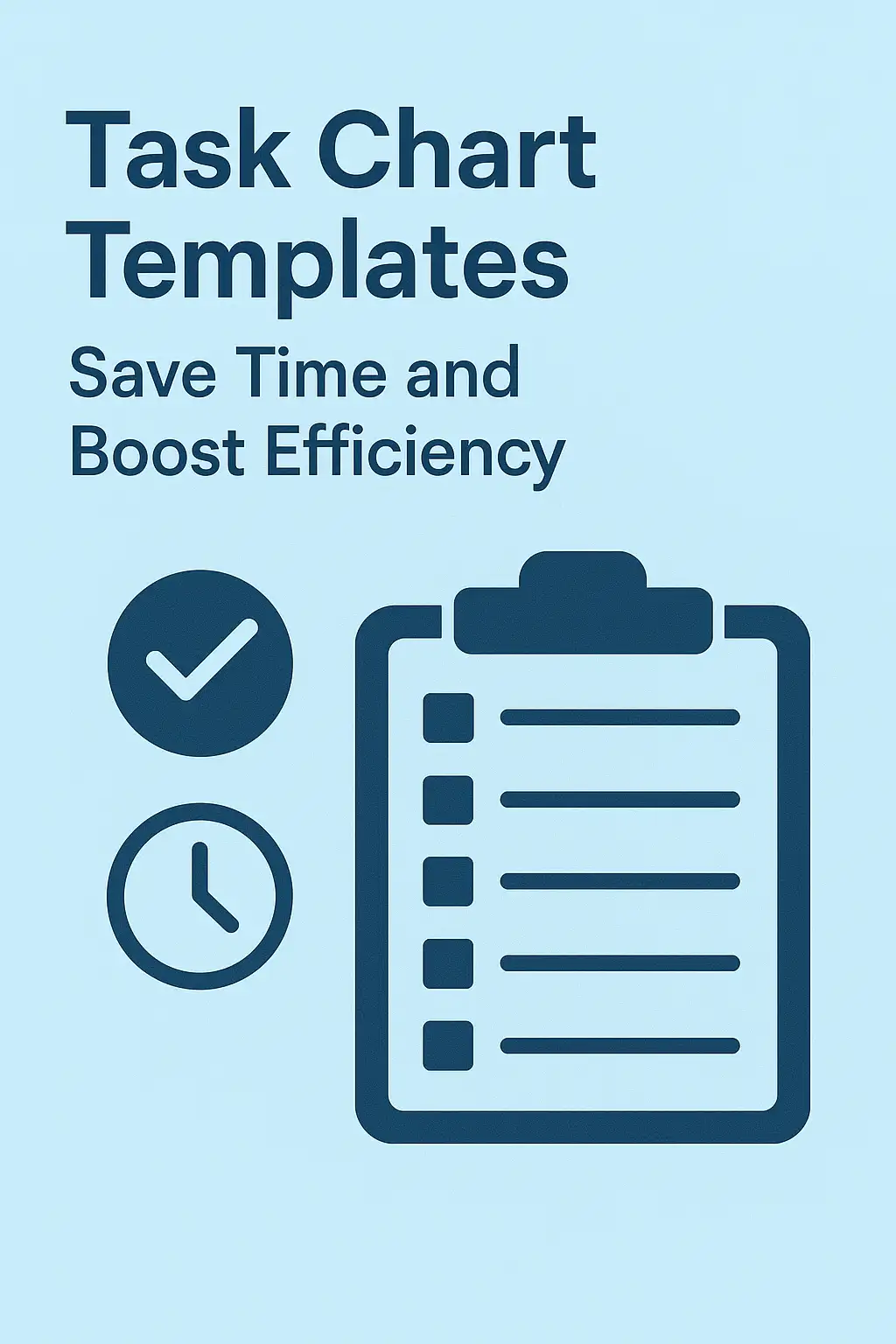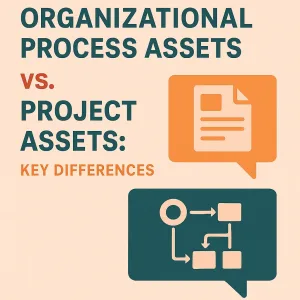Introduction to Task Charts
Effective organization and clear communication are paramount to success. One of the most valuable tools that project coordinators and administrators can utilize is the task chart.
Definition of Task Charts
A task chart is a visual representation that outlines the various tasks involved in a project, detailing who is responsible for each task, the timeline for completion, and the interdependencies between tasks. This structured format not only clarifies the workflow but also serves as a roadmap for project execution. By breaking down complex projects into manageable components, task charts help teams understand their roles and responsibilities, ensuring that everyone is aligned towards common goals.
Role in Project Management
Task charts play a crucial role in enhancing project management by:
- Improving Organization: They provide a clear overview of all tasks, making it easier to track progress and identify bottlenecks. This organization helps prevent tasks from falling through the cracks and ensures that deadlines are met.
- Boosting Efficiency: By visualizing the project timeline and task assignments, teams can prioritize their work effectively. Task charts facilitate better resource allocation and time management, leading to increased productivity and reduced project delays.
- Enhancing Communication: With a task chart, all team members have access to the same information, which fosters transparency and collaboration. This shared understanding minimizes misunderstandings and keeps everyone on the same page.
Industries That Benefit from Task Charts
Task charts are versatile tools that can be adapted to various industries, including:
- Construction: Managing timelines, subcontractors, and project milestones.
- IT and Software Development: Tracking development phases, testing, and deployment schedules.
- Marketing: Coordinating campaigns, content creation, and promotional activities.
- Healthcare: Organizing patient care tasks, treatment plans, and administrative duties.
By implementing task charts, project coordinators and administrators across these industries can streamline their processes, enhance team collaboration, and ultimately drive project success. Customizable templates for task charts can further simplify this process, allowing teams to tailor their charts to meet specific project needs and industry requirements.
Benefits of Using Task Charts
Task charts serve as invaluable tools that can significantly enhance the efficiency and effectiveness of project execution. Here are some key benefits of incorporating task charts into your project management practices:
- Enhanced Clarity and Visibility of Project Tasks: Task charts provide a clear visual representation of all project tasks, making it easier for team members to understand their responsibilities and the overall project timeline. This clarity helps in reducing confusion and ensures that everyone is on the same page regarding project goals and deadlines.
- Improved Team Collaboration and Communication: By utilizing task charts, project teams can foster better collaboration. These charts facilitate open communication about task progress, dependencies, and potential roadblocks. When team members can easily see who is responsible for what, it encourages proactive discussions and problem-solving, ultimately leading to a more cohesive team environment.
- Time-Saving Benefits Through Streamlined Processes: Task charts help streamline project processes by organizing tasks in a logical sequence. This organization allows project coordinators to identify overlapping tasks, prioritize effectively, and allocate resources more efficiently. As a result, teams can save time that would otherwise be spent on managing disorganized task lists or clarifying responsibilities.
- Increased Accountability with Clear Task Assignments: One of the most significant advantages of using task charts is the establishment of accountability. When tasks are clearly assigned to specific team members, it becomes easier to track progress and hold individuals accountable for their contributions. This accountability not only motivates team members to complete their tasks on time but also enhances the overall productivity of the project.
Customizable Task Chart Templates
The ability to efficiently organize and track tasks is crucial for success. Customizable task chart templates serve as powerful tools that can be adapted to meet the unique needs of various industries. These templates not only streamline project coordination but also enhance overall productivity. Below, we explore the concept of customizable templates, provide examples of their application across different sectors, and highlight the benefits of using tailored task charts.
Introduction to Customizable Templates
Customizable task chart templates are pre-designed frameworks that allow project coordinators and administrators to input specific tasks, deadlines, and resources relevant to their projects. These templates can be modified to fit the unique requirements of different industries, making them versatile tools for managing diverse projects. By utilizing these templates, teams can save time on planning and focus more on execution, ensuring that projects stay on track and within budget.
Examples of Different Tasks and Projects
- Construction Projects: In the construction industry, task charts can be tailored to include phases such as site preparation, foundation work, framing, and inspections. Each phase can have specific tasks assigned to different teams, ensuring clarity in responsibilities and timelines.
- Software Development: For software projects, task charts can be customized to reflect stages like requirements gathering, design, coding, testing, and deployment. This allows teams to track progress and manage dependencies effectively.
- Event Planning: Event coordinators can use task charts to outline tasks such as venue selection, vendor management, marketing, and logistics. Custom templates can help ensure that all aspects of the event are covered and deadlines are met.
- Marketing Campaigns: In marketing, task charts can be adapted to include tasks related to content creation, social media management, analytics, and reporting. This helps teams stay organized and aligned with campaign goals.
Benefits of Using Templates Tailored to Specific Industries
- Increased Efficiency: Customizable templates save time by providing a structured format that can be quickly filled out with relevant information. This reduces the need to start from scratch for each project.
- Enhanced Clarity: Tailored templates help clarify roles and responsibilities within a project. When team members understand their specific tasks and deadlines, it minimizes confusion and enhances accountability.
- Improved Collaboration: Custom task charts facilitate better communication among team members. By having a shared visual representation of tasks, everyone can stay informed about project progress and any changes that may arise.
- Flexibility and Adaptability: Industries often have unique requirements and workflows. Customizable templates allow project coordinators to adapt the charts to fit their specific needs, ensuring that they remain relevant and effective.
- Standardization: Using templates across projects within the same industry can help standardize processes, making it easier to replicate successful strategies and improve overall project outcomes.
Industry-Specific Task Chart Templates
Utilizing task charts can significantly enhance efficiency and organization across various industries. Below are examples of customizable task chart templates tailored to meet the unique needs of different sectors, enabling project coordinators and administrators to streamline their workflows effectively.
1. Construction: Gantt Charts for Project Scheduling
Gantt charts are invaluable in the construction industry, providing a visual timeline for project scheduling. These charts allow project managers to:
- Outline Project Phases: Clearly define each stage of construction, from planning to execution.
- Allocate Resources: Assign tasks to team members and track resource availability.
- Monitor Progress: Easily visualize project timelines and identify any delays or bottlenecks.
By using Gantt charts, construction teams can ensure that projects stay on schedule and within budget, facilitating better communication among stakeholders.
2. Software Development: Agile Task Boards for Iterative Progress
In software development, Agile task boards are essential for managing iterative progress. These boards help teams:
- Visualize Workflows: Display tasks in columns representing different stages of development (e.g., To Do, In Progress, Done).
- Facilitate Collaboration: Encourage team members to update their progress in real-time, fostering transparency and accountability.
- Adapt to Changes: Allow for quick adjustments to priorities based on feedback or changing project requirements.
Agile task boards empower software development teams to remain flexible and responsive, ultimately leading to higher quality products delivered on time.
3. Marketing: Campaign Tracking Charts for Coordinated Efforts
Marketing teams benefit greatly from campaign tracking charts, which help in:
- Planning Campaigns: Outline key activities, deadlines, and responsible parties for each marketing initiative.
- Measuring Performance: Track metrics and KPIs to assess the effectiveness of campaigns in real-time.
- Ensuring Alignment: Coordinate efforts across different marketing channels, ensuring that all team members are on the same page.
By implementing campaign tracking charts, marketing coordinators can enhance collaboration and optimize their strategies for better results.
4. Healthcare: Patient Care Task Charts for Scheduling Treatments
In the healthcare sector, patient care task charts are crucial for managing treatment schedules. These charts enable healthcare administrators to:
- Organize Patient Care: Schedule appointments, treatments, and follow-ups efficiently.
- Enhance Communication: Share information among healthcare providers to ensure continuity of care.
- Monitor Patient Progress: Keep track of treatment plans and adjust them as necessary based on patient needs.
Utilizing patient care task charts helps healthcare teams deliver timely and effective care, ultimately improving patient outcomes.
How to Create Your Own Task Chart Template
Creating a task chart template is an essential step for project coordinators and administrators looking to enhance efficiency and organization within their teams. A well-designed task chart not only helps in tracking progress but also ensures that all team members are aligned with their responsibilities. Here’s a comprehensive guide to help you design a personalized task chart template that can be customized for various industries.
Step-by-Step Instructions for Designing a Personalized Task Chart
- Define Your Objectives: Start by identifying the specific goals of your task chart. Consider what information needs to be tracked, such as task names, deadlines, responsible parties, and status updates.
- Choose a Format: Decide whether you want a digital or physical task chart. Digital formats are often more flexible and easier to update, while physical charts can be useful for quick reference in team meetings.
- Select Key Components:
- Include essential elements such as:
- Task Name: A brief description of the task.
- Assignee: The person responsible for completing the task.
- Due Date: When the task should be completed.
- Status: Current progress (e.g., Not Started, In Progress, Completed).
- Priority Level: Indicate the urgency of the task.
- Design the Layout: Organize the components in a clear and logical manner. Use tables or grids to separate different tasks and their details. Ensure that the layout is visually appealing and easy to read.
- Incorporate Color Coding: Use colors to differentiate between various statuses or priority levels. This visual cue can help team members quickly assess the progress of tasks at a glance.
- Test and Revise: Before finalizing your template, test it with a small project. Gather feedback from team members on its usability and make necessary adjustments.
Tools and Software Recommendations for Creating Task Charts
- Microsoft Excel or Google Sheets: These spreadsheet tools are excellent for creating customizable task charts. They offer flexibility in formatting and allow for easy updates and sharing.
- Trello: A project management tool that uses boards and cards to represent tasks. Trello is user-friendly and allows for easy collaboration among team members.
- Asana: This software provides a robust platform for task management, including customizable templates that can be tailored to fit your project needs.
- Smartsheet: A powerful tool that combines the functionality of spreadsheets with project management features, making it ideal for creating detailed task charts.
- Canva: For those looking to create visually appealing task charts, Canva offers a variety of templates that can be customized with graphics and colors.
Tips for Ensuring the Template is User-Friendly and Adaptable
- Keep It Simple: Avoid cluttering the template with too much information. A clean and straightforward design will make it easier for users to navigate.
- Use Clear Labels: Ensure that all sections of the task chart are clearly labeled. This will help users understand what information is required in each field.
- Make It Flexible: Design your template in a way that allows for easy modifications. Users should be able to add or remove tasks without disrupting the overall layout.
- Provide Instructions: Include a brief guide or legend that explains how to use the template effectively. This can be particularly helpful for new team members.
- Solicit Feedback: After implementing the template, regularly ask for feedback from users to identify areas for improvement. This will help you refine the template over time.
By following these steps and utilizing the recommended tools, project coordinators and administrators can create effective task chart templates that save time and boost efficiency across various industries. A well-structured task chart not only enhances productivity but also fosters better communication and accountability within teams.
Best Practices for Using Task Charts
Task charts are essential tools in project management that help streamline workflows, enhance communication, and ensure that all team members are aligned with project goals. To maximize the effectiveness of task charts, consider the following best practices:
- Regular Updates and Maintenance: Consistently updating the task chart is crucial for maintaining its relevance and accuracy. Schedule regular reviews to ensure that all tasks reflect the current status of the project. This practice not only keeps the team informed but also helps in identifying any potential bottlenecks early on. By maintaining an up-to-date task chart, project coordinators can make informed decisions and adjustments as needed, ultimately leading to smoother project execution.
- Involving Team Members in the Task Assignment Process: Engaging team members in the task assignment process fosters a sense of ownership and accountability. When team members have a say in their responsibilities, they are more likely to be committed to their tasks. Encourage open discussions about workload and preferences, allowing team members to express their strengths and areas of interest. This collaborative approach not only enhances team morale but also optimizes task allocation based on individual capabilities, leading to improved productivity.
- Setting Clear Deadlines and Milestones: Clearly defined deadlines and milestones are vital components of an effective task chart. Establishing specific timeframes for each task helps in tracking progress and maintaining momentum throughout the project. Milestones serve as checkpoints that allow teams to assess their progress and make necessary adjustments. By incorporating these elements into the task chart, project coordinators can ensure that the team remains focused and motivated, ultimately driving the project toward successful completion.
Conclusion
Task charts serve as invaluable tools that streamline processes, enhance communication, and boost overall efficiency. By visually representing tasks, deadlines, and responsibilities, these charts provide clarity and structure, allowing project coordinators and administrators to manage their projects more effectively.
Key Benefits of Task Charts:
- Enhanced Organization: Task charts help in organizing tasks systematically, making it easier to track progress and identify bottlenecks.
- Improved Communication: They facilitate better communication among team members by clearly outlining who is responsible for what, reducing misunderstandings and ensuring accountability.
- Increased Productivity: With a clear visual representation of tasks, teams can prioritize their work more effectively, leading to increased productivity and timely project completion.
The flexibility of task charts is another significant advantage. They can be customized to fit the unique needs of various industries, whether in construction, IT, healthcare, or marketing. This adaptability allows project teams to tailor their task charts to reflect specific workflows, making them relevant and practical for any project scenario.
We encourage project coordinators and administrators to adopt customizable task chart templates for their projects. These templates not only save time but also provide a solid foundation for effective project management. By implementing task charts, teams can enhance their planning, execution, and monitoring processes, ultimately leading to successful project outcomes.
Find out more about Shaun Stoltz https://www.shaunstoltz.com/about/.
This post was written by an AI and reviewed/edited by a human.



